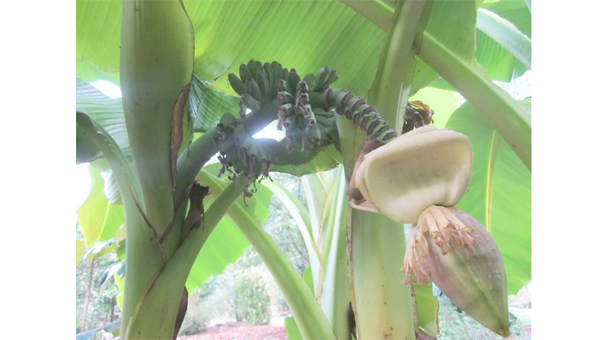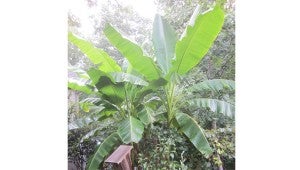Drew experiences success growing musa banana plant in Polk County
Published 11:10 am Wednesday, February 20, 2013
One woman finds success with unexpected fruit
by Channing Marshall
Ruby Drew found success growing musa banana plants in Mill Spring several years ago.
“I was given the gift of a banana tree when we lived in Asheville six or seven years ago,” Drew said.
When the banana tree was small, she would bring it inside for the cold winters, because she knew it wouldn’t be able to survive. When she moved to Lake Adger in 2006, Drew dug it out of the ground and transplanted it to their new yard. Even after being eaten by deer, the root ball came back stronger than ever, Drew said, and it is now too big to be dug out of the ground for the winter.
Determined to make success of her banana plant, Drew said she learned that putting about a foot of pine straw over the base of the plant would help it to withstand the cold temperatures the tropical banana plant usually cannot.
“New growth comes from the underground rhizomes that peek up from the ground each spring,” Drew said. “We have had as many as 12 baby banana trees come up each year.”
According to Drew, this is, however, the first year the trees have produced flowering stalks. She said she believes the trees may have been triggered to produce fruit after the unseasonable frost that occurred this spring, which killed the new leaves of the spring growth.
Drew pruned the frosted leaves, and shortly afterwards, the tree, for the first time in six years, produced three flower stalks.
When the end bulb of the flower stalk opens, flowers of about 2 inches are produced, Drew said. When insects fertilize them, the base of the flower develops a banana, which forms a circular bunch around the stalk. Soon after, the subsequent petals of the stalk open and the process is repeated until a long banana stalk appears.
Depending on the variety of the banana plant, warmer climates (approximately 80 degrees on average) and a regular rainfall rate of four inches per month usually allow this tropical fruit to grow best. A few varieties, including the musa banana, are able to tolerate slightly cooler temperatures. Polk County typically reaches these numbers during the summer months, but the colder winters would theoretically make it difficult to harvest these plants successfully.
Although flowering stalks have indeed appeared on Ruby Drew’s banana plant, it will probably take anywhere from six to 12 months for these little bananas to ripen.
“At this point we don’t know if the bananas will actually ripen,” said Drew, “but who would have thought that the banana plant could grow in Polk County?”







